Analyzing the Complete Volume Count of Berserk


Intro
The world of manga is diverse, but few series have carved as deep a niche into the fabric of modern storytelling as Berserk. Created by Kentaro Miura, this dark fantasy epic has transcended mere entertainment, challenging readers to confront complex themes of human nature, morality, and the relentless struggle against fate. As we venture into the exploration of the total number of Berserk volumes, it’s essential to grasp the saga's depth beyond the numbers.
What lies behind the impressive count of volumes and chapters is a journey illuminated through Miura's unparalleled artistry and storytelling prowess. The story, rich in symbolic and thematic depth, reflects the trials of its characters against the backdrop of a brutal, unforgiving world. Readers are not just spectators; they are drawn into a visceral experience, often mirroring their own battles with despair and hope.
We'll cover the series from its inception in 1989, through its impressive roster of currently available volumes, to its enduring legacy following Miura's passing. Throughout this article, you will gain insights into the historical context of its publication, the variations and nuances in releases across different regions, and its profound impact on both the manga industry and popular culture.
By the end of this exploration, you will have a thorough understanding of not just the total number of volumes in Berserk, but the intricate layers that make this series a cornerstone of manga literature.
Prelude to Berserk
Berserk holds a unique position in the pantheon of manga, an influential series that has resonated with readers for over three decades. This section will set the stage for a detailed exploration of the series, shedding light on its roots, themes, and the undeniable impact it has had in the manga world and beyond.
Overview of the Series
Created by Kentaro Miura, Berserk first graced the pages of Monthly Animal House magazine in 1989, quickly capturing the imagination of its readers. Set in a dark medieval fantasy world, the story follows Guts, a lone mercenary with a tragic past, on a relentless quest for vengeance. Throughout his journey, the series delves deep into complex themes like fate, free will, friendship, and the human condition.
The artwork in Berserk is nothing short of breathtaking. Miura's meticulous illustrations depict not only haunting characters and gruesome battles but also moments of exquisite beauty and emotional depth. This juxtaposition of light and darkness mirrors the series' narrative, which often blurs the lines between good and evil.
Beyond its gripping tale of desperation and defiance, the series stands out for its character development. Guts evolves from a brooding, angry warrior into a more nuanced figure. This transformation is not just a personal journey but becomes emblematic of wider philosophical questions that resonate with the readers.
Significance in the Manga Industry
Berserk has cemented its position as a hallmark of the manga industry, influencing countless artists and writers. Its detailed storytelling and innovative approach to themes have redefined what a dark fantasy can be. The series has sparked numerous discussions and analyses, making it a subject of study in various literary and artistic circles.
Besides its thematic richness, the mechanics of its release also played a pivotal role in its cultural footprint. The pacing of the series, sometimes slow yet deliberate, allowed for a rich buildup of tension and character arcs. Readers were often left on the edge of their seats, awaiting each volume, creating a community lively with speculation and theories.
The impact of Berserk extends beyond the pages of its manga, having inspired animations, video games, and various forms of media adaptations. Its legacy can be witnessed in titles such as Dark Souls and Devil May Cry, where artists have drawn inspiration from its gritty narrative style and character designs.
"In an industry where shonen tropes often dominate, Berserk's somber tone and philosophical depth have carved out a distinct niche that challenges conventional storytelling."
Thus, the introduction to this series isn't just a statement of its popularity. It is also a recognition of its profound influence on the manga landscape and its ability to resonate with audiences around the globe.
Understanding Volume Releases
When exploring the complexities of a revered manga series like Berserk, understanding volume releases goes far beyond just tracking how many collections are out there. It’s about comprehending the intricate tapestry of publication history that shapes the narrative experience for readers around the globe. The historical timeline, variations in the release schedule variously influenced by region, and how these factors contribute to the overall reception and evolution of the series, warrants thorough discussion.
One crucial element of understanding volume releases is examining how Berserk's distribution reflected broader trends in the manga industry. This series, penned by Kentaro Miura, pushed the boundaries of stylistic and thematic conventions. In the early days, Berserk was serialized in a weekly format, allowing fans to witness the creative journey unfold in real-time. This aspect not only generated a devoted readership but also fostered a unique cultural conversation, as readers engaged with the growth of characters and plotlines that often mirrored the artist's own progression.
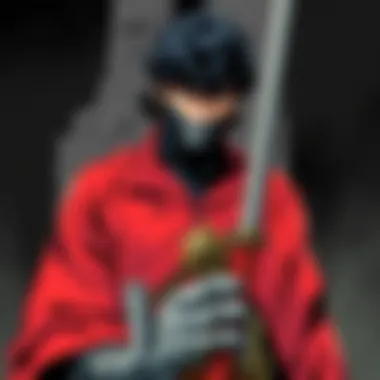
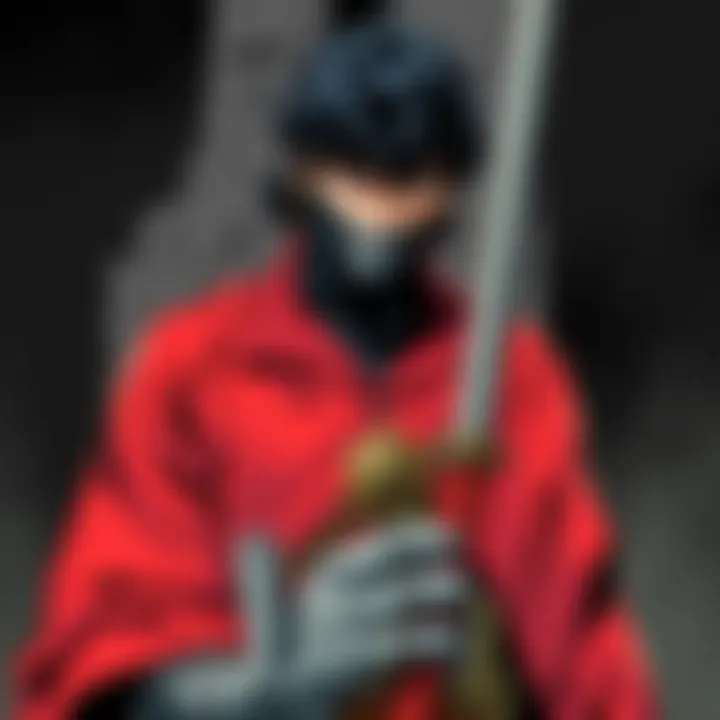
Another significant consideration involves the benefits and implications of these releases. For instance, each volume acts as a distinct chapter, reinforcing the episodic nature of storytelling while permitting deeper exploration of character arcs over time. By segmenting the story into volumes, new audiences could join in at various points, easing the entry into such a sprawling narrative. This segmentation is particularly relevant for a series with an intricate plot and profound themes like Berserk, where readers may appreciate the ability to digest the story gradually.
Challenges and Considerations
The distinction in release timings across different territories illustrates a practical reality of manga distribution. It’s not uncommon for Japan’s editions to hit shelves much earlier compared to international counterparts. With this in mind, one might ponder the impact on global readership. As Berserk slowly gained international fanfare, discrepancies in availability introduced a challenge—spoilers could easily pervade forums and social media if users weren’t careful.
"The publication landscape often shapes how we connect to stories, and Berserk is no exception. The staggered releases allowed it to mature in the public eye, fostering a rich fan discourse that has endured for years."
Understanding the importance of volume releases ultimately highlights not just the logistical components but also the cultural narrative woven throughout the series. As we delve into the initial release of Berserk volumes and the current tally, we uncover how these elements form a foundational element of its legacy.
Geographical Variations in Volume Release
Understanding the geographical variations in the release of Berserk volumes sheds light on how this iconic series has made its way into the hands of fans around the globe. The manga industry often operates differently across regions, influenced by factors like cultural preferences, publication formats, and marketing strategies. These differences can affect not only the timing of releases but also the overall accessibility and presentation of the series in various countries. It's essential to explore how these variations have contributed to the Berserk phenomenon, giving fans unique experiences shaped by their location.
Japan's Release Schedule
In Japan, Berserk first appeared in Young Animal magazine in 1989. Kentaro Miura's work was initially serialized, and the first volume was published by Hakusensha in 1990. Japan's release schedule was relatively steady at first, with volumes typically coming out annually. However, as Miura's dedication to detail grew, publication slowed down. Fan expectations soared, and the gap between volumes often stretched to years, creating heightened anticipation.
For instance, after the 38th volume released in 2016, fans were left in suspense until the highly anticipated arrival of the 39th volume in 2019, a nearly three-year wait. Such delays reveal the commitment of Miura to maintain quality, but they can also frustrate audiences eager for new content. It’s a reminder that in the world of publishing, timing is not just about speed; it’s about crafting a narrative that resonates.
International Editions and Adaptations
The international editions of Berserk have sparked a fascinating dichotomy in availability and presentation. Countries like the United States, the United Kingdom, and various parts of Europe became focal points for the adaptation of Miura’s work, leading to a surge in popularity outside Japan. Dark Horse Comics, for example, secured the North American licensing rights and began publishing Berserk in English, with the first volume released in 1990, mirroring Japan's timeline.
"Berserk has not only carved a niche in Japan but has transcended geographical boundaries, influencing cultures worldwide."
One noteworthy aspect of international adaptations is the format difference. In various areas, including North America, the content sees occasional modifications to align with the target audience’s sensibilities. Some of these adjustments can lead to slightly altered art styles or translation nuances, which may seem trivial but can influence reception profoundly.
In regions with a more vibrant manga culture, such as France, Berserk has been massively popular, often finding itself prominently displayed in manga shops, drawing fans from various backgrounds. The French version, published by Glenat, occasionally differs in the binding style used, which may appeal to collectors and avid readers alike.
Alongside these variations, the Berserk fan community has taken to online platforms like Reddit and Facebook, sparking discussions about raw scans, translations, and art critiques. These exchanges not only enhance excitement but also establish opportunities for fans globally to come together, forming a tight-knit community around a shared passion.
In summary, the local schedules and adaptation processes have not only impacted how fans consume Berserk, but they’ve also shaped the series’ cultural resonance. The uniqueness of these geographical influences adds layers to the Berserk experience, for while the story remains the same, the journey to accessing it varies vastly across the globe.
The Evolution of Berserk
The evolution of Berserk is a narrative that transcends the pages of a manga. It reflects the artistic journey of Kentaro Miura, whose work has narrated a tale of struggle, despair, and hope. This evolution holds significant weight in understanding not only the depth of the story but also its place in the broader context of manga history. The changes in art style and narrative intricacy throughout the series show how the protagonist, Guts, mirrors Miura's own growth as an artist.
Artistic and Narrative Development
From its initial chapters to the later volumes, Berserk displays a remarkable evolution in both art and story structure. Early on, the illustrations were less detailed, with a style that matched the simpler narrative pace. As Miura progressed, his artwork became extraordinarily intricate, showcasing a mastery of shadow and light that has rarely been replicated in the genre. The characters' expressions began to possess a haunting depth, capturing their emotional turmoil and brutal realities of their lives.
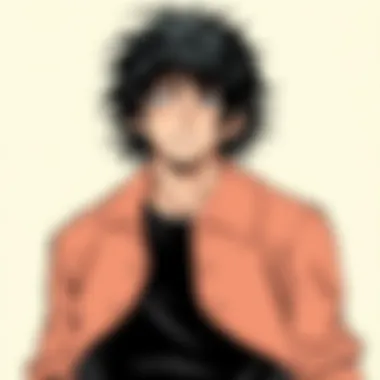

Miura's storytelling also transformed significantly. He moved from straightforward skirmishes to a complex web of character motivations and moral dilemmas. Episodes featuring Guts’s encounters with various foes showcased a shift from black-and-white depictions of good and evil to a nuanced understanding of humanity's darker aspects. The evolution is not just in visual flair; it’s also a reflection of increased thematic richness.
For example, early fights mostly revolved around Guts’s physical strength against monstrous foes. However, as the story matured, encounters turned to psychological warfare. Characters such as Griffith evolved from allies to antagonists, creating emotional stakes that challenged readers to reconsider loyalty and ambition. This transformation is not merely an artistic one; it underscores the nature of ambition and its consequences, resonating with fans across decades.
Impact of Kentaro Miura's Passing
Kentaro Miura's untimely passing in May 2021 left a void that echoed through the manga community. Fans and fellow creators acknowledged his profound influence on the art of storytelling and illustration. The impact of his death extended beyond the loss of a creator; it symbolized the end of an era for Berserk. It raised questions about the future of the series, and how the intricate threads of Guts's journey might be honored or continued.
In the wake of his departure, discussions emerged concerning the potential to continue Berserk. Unlike most manga, which often has a clear end, Berserk was still developing its intricate plotlines. Does one pick up the momentum Miura established? Or do they let the series rest, preserving a legacy untainted? The choices made following his passing may shape the series’ interpretation for a new generation.
Beyond the lore and story arcs, Miura's influence rippled through various artistic styles in manga, inspiring many creators to explore darker, more complex narratives. Those who have been touched by his work recognize the profound weight of his contribution to the medium. The blending of horror, fantasy, and the exploration of the human condition has set Berserk apart as both a work of art and a cultural phenomenon. Miura’s legacy lives on, flowing through the ink and paper of his creations, inviting new readers to grapple with its themes and characters, even as the series stands at a crossroads in its future.
"Berserk is not just a tale of monsters and battles; it’s a reflection of the human psyche, a pursuit of meaning in a world defined by chaos."
In gripping fashion, the evolution of Berserk is a testament to the transformative power of storytelling. It showcases Miura’s unwavering dedication, not only to the craft of manga but to the very essence of storytelling itself.
Berserk's Cultural Impact
Berserk, created by Kentaro Miura, transcends the traditional boundaries of manga. Its influence stretches far-reaching into various media, offering not just a tale but an entire experience that resonates with a multitude of audiences. The significance of this series lies in its ability to explore deep philosophical themes, stunning artistry, and raw emotion, paving the way for future works and providing a sturdy foundation for discussions about morality, despair, and the human condition in storytelling. The cultural footprint is impressive, prompting not just admiration but also critical analysis.
Influence on Other Manga and Media
The ripple effects of Berserk on the world of manga are profound, seen in numerous series that follow in its footsteps. Noteworthy titles like Attack on Titan and Fullmetal Alchemist borrow elements from its dark fantasy approach laced with intricate plots and multi-dimensional characters. Here are specific ways in which Berserk has inspired others:
- Storytelling Depth: Many contemporary manga incorporate rich backstories similar to Guts's harrowing journey, enhancing character relatability.
- Artistic Style: Miura’s intricate line work and dynamic action scenes have influenced a generation of artists, pushing them to raise their own visual storytelling standards.
- Dark Themes: The acceptance of darker narratives in mainstream manga can largely be attributed to Berserk, paving the way for stories that delve into despair and the morality of choices.
In video games, the inspiration manifests prominently in titles like Dark Souls and Bloodborne, where the tone, themes, and even world design reflect Miura's masterful work. Furthermore, the series’ aesthetics and philosophical inquiries seep into various forms of media, illustrating its wide-ranging reach.
Fan Community and Engagement
Berserk's fanbase is not merely a collection of readers; it’s a vibrant community that engages deeply with the narrative and its underlying themes. The emotional connection many readers feel comes from a shared understanding of the struggles depicted within the story, fostering a sense of camaraderie. Fans actively discuss theories about the story's intricate layers, character arcs, and potential future developments. Platforms like Reddit and Facebook host lively discussions and fan theories that keep the community thriving.
"The heart of Berserk doesn't just lie in its pages, but in the conversations it sparks among those who read it."
Some aspects of this engagement include:
- Fan Art and Cosplay: Creators exhibit their passion by producing stunning artworks and attending conventions in character cosplay.
- Fan Fiction and Analyses: Written content analyzing motives, themes, and character psychological assessments contribute to the narrative legacy.
- Memorials and Tributes: Post Miura’s passing, the community has rallied, sharing thoughts and memories, ensuring that his legacy endures through communal remembrance.
The sustained interest in Berserk ensures its place in cultural discussions, establishing a lasting impact that invites both newcomers and veterans alike to explore its depths.
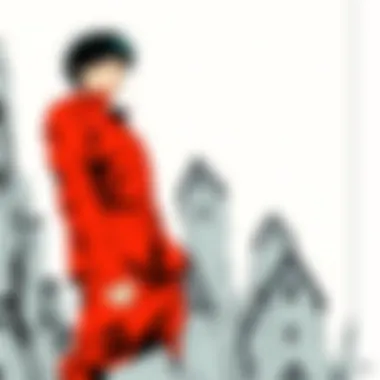
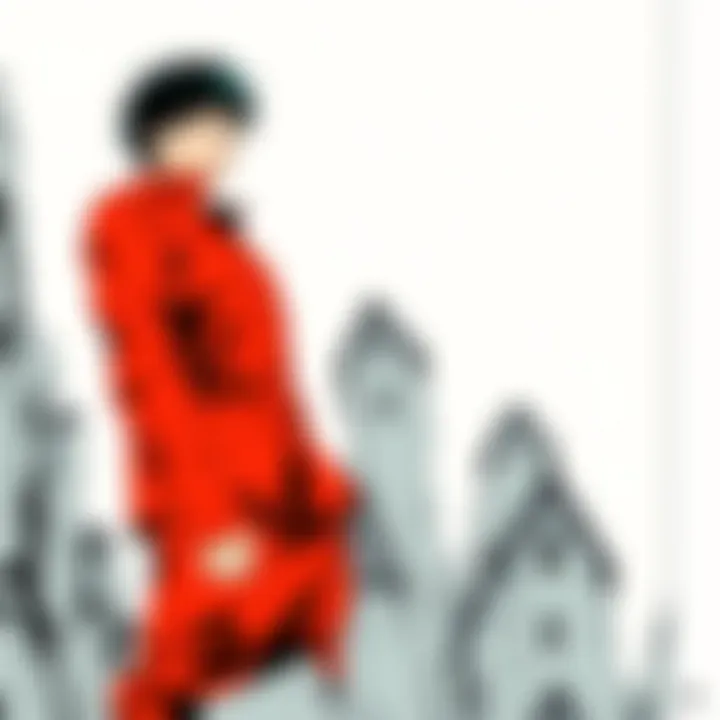
Future of the Series
Discussing the future of the Berserk series is not just about counting volumes or speculating on storylines. It’s a poignant reflection on how the legacy of Kentaro Miura may continue to shape the manga landscape. The contemplations regarding the series' continuation or eventual conclusion are as layered and complex as the narrative Miura crafted himself. For fans and newcomers alike, this exploration signifies a deeper understanding of what Berserk has represented and what it may still offer.
Prospects for Continuing the Story
The question that lingers in the hearts of followers is whether the story of Guts and the band of misfits he travels with will see a proper continuation. Kentaro Miura’s untimely passing leaves a significant void, and opinions vary on how to honor his legacy. Some fans believe that a continuation is vital, while others suggest that the story should rest with Miura, preserved in its original form. Regardless of stance, it’s evident that several factors will influence any future iterations:
- Quality over Quantity: Fans would prefer to see the story concluded with the same meticulous care that Miura employed throughout the series. If a continuation happens, bringing in a team that understands the essence of Berserk is crucial.
- Fan Engagement: The community around Berserk is extremely passionate. Engaging the fanbase in discussions and perhaps allowing their voice to shape potential continuations could create a collaborative sense of closure.
- Publishing Dynamics: The manga industry is constantly evolving. New platforms and methods of storytelling, such as digital manga subscription services, could provide fresh avenues for the series, reshaping how it continues in a modern context.
- Alternate Narratives: Some fans speculate about spin-offs or reimagined stories that may not directly continue Guts's tale but expand the Berserk universe—delving into supporting characters’ backstories or alternate timelines.
Though the pulse of Berserk may feel subdued at times, the fervent discussions indicate that its heart still beats strong. Fans hold their breath for news that could either revive or redefine their beloved series, hoping it stays true to the intricate world built by Miura.
Legacy of Berserk in Manga History
The legacy of Berserk is not merely charted in its volume count or sales figures; its impact is woven into the very fabric of manga history. As we look toward the future, we must also reflect on the profound influences Miura’s work has imparted on the genre.
- Groundbreaking Storytelling: Berserk set new standards in narrative depth and complexity. The raw emotions, moral ambiguity, and intricate character arcs have since inspired countless authors, pushing them to aim for layers in storytelling that previously went unexplored.
- Visual Mastery: The artwork of Berserk is renowned for its detail and fluidity, becoming a benchmark for many aspiring manga artists. The ability to evoke emotion and atmosphere through illustrations has been studied and emulated over generations.
- Cultural Resonance: Themes of fate, struggle, and resilience resonate not only within Japan but across the globe. It has prompted discussions about mental health, trauma, and the human condition, making it relevant in today’s society.
- Community Building: Berserk's fanbase is a testament to its impact, with vibrant discussions across platforms like Reddit and various social media channels. Fans frequently analyze character motivations, plotlines, and the philosophical undertones of the narrative.
In closing, the future of Berserk promises a mixture of hope and nostalgia. Whether the story continues or rests in its original state, the legacy is certain to endure, influencing the manga world for years to come. In the end, it’s about the journey, not just the volumes.
"The tale told by Berserk is one of strength against adversities, and that intrinsic quality, to thrive even when faced with darkness, will always leave its mark."
For more information on the cultural impact and community engagement surrounding Berserk, check out resources like Wikipedia and Britannica.
As we look ahead, let’s take a moment to appreciate the intricate, wondrous world Miura crafted.
Finale
When considering the total number of volumes in Berserk, its importance stretches far beyond the mere count of books on a shelf. This series, crafted meticulously by Kentaro Miura, embodies not only a narrative of dark fantasy but also reflects the evolving landscape of manga itself. Understanding this total volume count offers insight into the dedication and complexity involved in the storytelling process.
Recap of Total Volume Count
As of now, Berserk comprises 41 volumes, each brimming with intricate artwork and deep philosophical themes. The volumes span an extensive array of narratives, from the harrowing journey of Guts to the multifaceted relationships between characters. With the unmistakable mark of Miura’s tragic passing, the series' conclusion remains a point of speculation. Nevertheless, the established volumes serve as a testament to a legacy of creativity that influences many forms of media in the years to come.
- 41 Published Volumes: The raw number speaks volumes of the work's depth.
- Coupling Quality with Quantity: Miura’s ability to interweave profound themes alongside thrilling action distinguishes Berserk in an industry often fixated on trends.
Enduring Appeal of Berserk
Berserk holds an enduring appeal that continues to enthrall audiences, even years after its initial release. Several elements contribute to this lasting fascination:
- Complex Characters: Each character, from Guts to Griffith, represents raw human emotions and ethical dilemmas, allowing readers to forge genuine connections.
- Philosophical Depth: Unlike many manga that prioritize entertainment, Berserk challenges readers with significant existential questions—what it means to be human, the nature of ambition, and the implications of free will.
- Unique Aesthetic: Miura’s unique art style is another reason for the series' lasting impact. The valleys of despair presented in gritty illustrations amplify the emotions portrayed in the story.
"Berserk transcends the genre, bringing forth themes and art that resonate deeply with anyone searching for a meaning within chaos."
The amalgamation of these elements cultivates a dedicated fan community that engages consistently with the series, ensuring that Berserk will continue to resonate with new generations. Whether through fan theories, art, or discussions in forums such as Reddit, the spirit of Berserk lives on, echoing the enduring nature of Kentaro Miura’s vision.
In this way, the total volumes not only signify a numerical value but also a collection of memories, debates, and cultural significance intrinsic to manga history. As we look forward, the journey of Berserk remains as compelling as ever.



